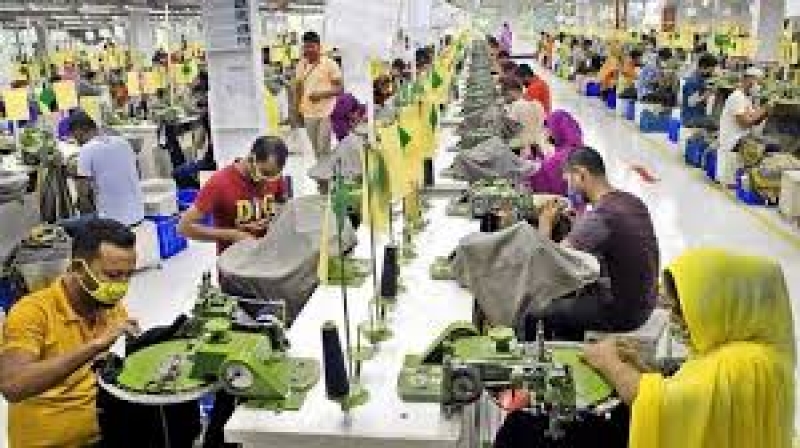- As debate over the location of climate conference razes on, will COP fail this time too? |
- UN Rights Office Warns of Gaza Escalation, West Bank Annexation |
- UN Warns Wildfires and Climate Change Worsen Air Quality |
- OIC Hails Belgian Declaration of Intent to Recognize Palestinian State |
- Bomb blast kills 15 near political rally in Pakistan |
Bangladesh RMG Exports Drop 5pc in August, Trade Hit

Representational photo
Bangladesh’s ready-made garment (RMG) exports declined by nearly 5 per cent in August, dealing a fresh blow to the country’s overall trade performance despite steady growth in the first month of the fiscal year.
According to updated data from the Export Promotion Bureau (EPB), the country’s total export earnings in August stood at USD 3.92 billion, compared to USD 4.03 billion in the same month last year—a fall of 2.93 per cent. Of this, RMG shipments alone amounted to USD 3.17 billion, registering a 4.75 per cent decline year-on-year.
This reversal comes after a brief rebound in July when garment exports surged by 24.5 per cent compared to the previous year. Industry insiders say the sudden drop in August reflects fluctuations in global demand and the lingering uncertainty over tariffs in major markets, especially the United States.
Exporters explained that prolonged negotiations on retaliatory tariffs in the US had slowed down the placement of orders earlier this year. As a result, Bangladesh’s shipments fell short in August despite the country’s relatively favourable tariff position compared to some competitors. With the tariff rates now settled, buyers are reportedly resuming discussions for new contracts, raising hopes of an uptick in orders in the coming months.
The broader export picture shows a mixed trend. In the first two months of the current 2025–26 fiscal year (July–August), Bangladesh’s total exports reached USD 8.69 billion, which is 10.61 per cent higher than in the same period of the previous fiscal. RMG exports alone accounted for USD 7.13 billion during this period, reflecting 9.63 per cent year-on-year growth.
However, August data revealed sharp declines across several sectors. Exports of leather and leather goods, processed agricultural items, non-leather footwear, and furniture all fell alongside RMG. In contrast, home textiles, jute and jute products, frozen food, plastics, and engineering goods posted notable growth, offsetting some of the losses.
Leather and leather goods remained the second-largest export earner after RMG, with sales of USD 2.3 billion in July–August, up by 13.68 per cent compared to last year. Yet, in August alone, this sector suffered a 1.5 per cent dip. Processed agricultural products ranked third, earning USD 1.7 billion in the first two months, with a modest growth of 3.96 per cent overall but a 4 per cent decline in August.
Home textiles emerged as the fourth-largest contributor, fetching USD 1.4 billion in July–August with a robust 12.68 per cent growth. This sector continued to show resilience despite global demand challenges.
Exporters remain cautiously optimistic that the confirmed tariff agreements in key markets will ease uncertainties and encourage buyers to increase orders in the months ahead. Nonetheless, the August downturn highlights the fragile nature of Bangladesh’s export sector, which remains heavily reliant on ready-made garments while facing competitive pressures and global market volatility.

